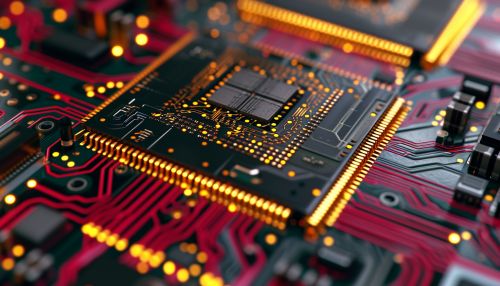Neuromorphic computing
Introduction
Neuromorphic computing refers to the use of very-large-scale integration (VLSI) systems containing electronic analog circuits to mimic neuro-biological architectures present in the nervous system. In recent years, neuromorphic computing has emerged as a promising approach to overcome the limitations of traditional Von Neumann architectures and Moore's Law.


History and Development
The concept of neuromorphic computing was first proposed by Carver Mead, in the late 1980s. Mead, a pioneer in the field of VLSI, proposed that analog VLSI could be used to mimic the neuro-biological architectures present in the nervous system, leading to the concept of neuromorphic engineering.
The development of neuromorphic computing systems has been driven by two key factors: the limitations of traditional computing architectures and the desire to understand and replicate the computing capabilities of the brain. The brain is an extremely powerful and efficient computing machine, capable of performing complex tasks with a fraction of the power consumed by modern computers.
Neuromorphic Systems
Neuromorphic systems are designed to mimic the structure and function of the brain. They are composed of large networks of neurons and synapses, which communicate through spikes, similar to the way neurons in the brain communicate. These systems are capable of learning and adapting to new inputs, making them ideal for tasks such as pattern recognition and decision making.
Neuromorphic systems can be implemented using a variety of technologies, including analog VLSI, digital VLSI, and more recently, memristors. Each of these technologies has its own advantages and challenges, and the choice of technology depends on the specific requirements of the application.
Neuromorphic Chips
Neuromorphic chips are the hardware implementation of neuromorphic systems. These chips are designed to mimic the structure and function of the brain, with large networks of neurons and synapses. Neuromorphic chips can be implemented using a variety of technologies, including analog VLSI, digital VLSI, and memristors.
One of the most well-known neuromorphic chips is IBM's TrueNorth, which contains over a million programmable neurons and 256 million programmable synapses. Other notable neuromorphic chips include Intel's Loihi and the SpiNNaker chip developed by the University of Manchester.
Applications
Neuromorphic computing has a wide range of potential applications, including AI, robotics, and IoT. In AI, neuromorphic systems can be used to implement neural networks, which are the basis for many modern AI algorithms. In robotics, neuromorphic systems can be used to implement adaptive control systems, which can learn and adapt to new situations. In IoT, neuromorphic systems can be used to implement low-power, high-performance edge devices.
Future Perspectives
The future of neuromorphic computing looks promising, with ongoing research in areas such as neuromorphic sensors, neuromorphic communication systems, and large-scale neuromorphic systems. However, there are also significant challenges to be overcome, including the development of efficient learning algorithms, the integration of neuromorphic systems with conventional computing systems, and the scaling of neuromorphic systems to the size of the human brain.
